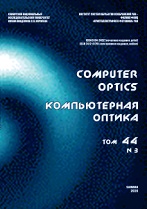|
This article is cited in 3 scientific papers (total in 3 papers)
IMAGE PROCESSING, PATTERN RECOGNITION
Mathematics and practice of color space invariants by the example of determining the gray balance for a digital printing system
D. A. Tarasov, O. B. Milder
Ural Federal University, Ekaterinburg, Russia
Abstract:
In modern printing, a large number of tasks are associated with the mutual transformation of color spaces. In particular, the most common pair of hardware-dependent color spaces is RGB and CMYK, the mutual transformation of colors in which is ambiguous, which creates significant problems in color reproduction. To solve this problem, we propose using color space invariants — gradation trajectories and gradation surfaces, which are analogs of gradation curves for initial colorants and their binary overlays, constructed in the absolute color space of the CIE Lab. Invariants are introduced on the basis of the mathematical apparatus of the differential geometry of spatial curves and surfaces. Practical application of color space invariants involves certain difficulties associated with their complex analytical description; moreover, for most practical problems, the high accuracy of the model is redundant. For the practical application of invariants, we propose a simpler approach using natural color sampling in digital printing systems. As an example, the procedure for determining the gray balance for an electrophotographic printing press is given.
Keywords:
grey balance, gradation trajectories, gradation surfaces, digital printing.
Received: 08.06.2019
Accepted: 24.10.2019
Citation:
D. A. Tarasov, O. B. Milder, “Mathematics and practice of color space invariants by the example of determining the gray balance for a digital printing system”, Computer Optics, 44:1 (2020), 117–126
Linking options:
https://www.mathnet.ru/eng/co769 https://www.mathnet.ru/eng/co/v44/i1/p117
|

| Statistics & downloads: |
| Abstract page: | 113 | | Full-text PDF : | 30 | | References: | 24 |
|




 Contact us:
Contact us: Terms of Use
Terms of Use
 Registration to the website
Registration to the website Logotypes
Logotypes








 Citation in format
Citation in format 
